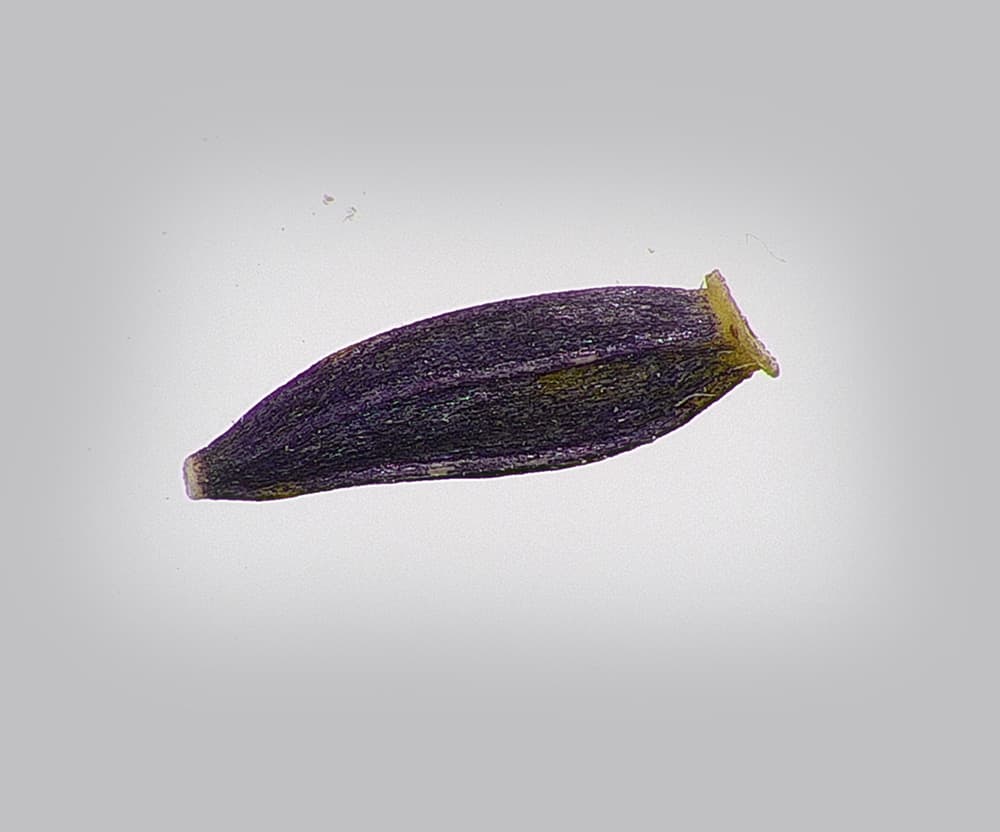Symphyotrichum laeve var. laeve
- Genus
Symphyotrichum
- Family
Asteraceae
- Synonyms
Read More
Aster laevis
Aster falcidens
Aster laevis var. falcatus
Aster steeleorum
Symphyotrichum var. concinnum
Symphyotrichum var. geyeri
Symphyotrichum var. pupuratum
- Common names
Read More
Smooth blue aster
Blue aster
Smooth-leaved aster
Glaucous Michaelmas-daisy
Glaucous aster
See More
Purity
- ISTA PSD
4
See Details - AOSA PSU
28
See Details - Purity working weight (grams)
0.75
See Details - Other species (OSD)/Noxious working weight (grams)
7.5
See Details
PSU 28
Intact achene, whether or not a seed is present, with or without one or more of the following structures: beak, bristle, hairs, pappus, or wing.
Piece of broken achene larger than one-half of the original size, unless no seed is present.
Seed, with or without pericarp/seed coat.
Piece of broken seed, with or without pericarp/seed coat, larger than one-half the original size.
TWS Notes
PSD 4
Achene, with or without beak, pappus or bracts, including achenes where two or more seed units are joined together by fused pericarps, unless it is obvious that no seed is present.
Piece of achene larger than one-half the original size, unless it is obvious that no seed is present.
Seed, with the pericarp/testa partially or entirely removed.
Piece of seed larger than one-half the original size, with the pericarp/testa partially or entirely removed.
TWS Notes
Purity working weight (grams)
Noxious working weight/OSD
Germination and dormancy breaking method
|
||||||
|
||||||
|
||||||
|
Germination Image Gallery
Description of Normal/Abnormal Seedlings:
Seedlings will be evaluated as normal when they have the essential structures that will have the ability to produce a plant growing in favourable conditions. Seedling conditions present (singly or in combination), which would cause the seedling to be evaluated as abnormal (not considered viable):
Cotyledons: less than half of the original cotyledon healthy tissue remaining attached.
Epicotyl: missing (considered present if cotyledons are intact).
Hypocotyl: open lesions extending into conducting tissue. Shortened curled or thickened.
Root: None, weak stubby or missing primary root even with weak secondary roots.
Seedling: Albino seedling is abnormal. Primary infection in one or more essential structures. Consider infection to be secondary if seedling is well developed and normally balanced (Normal).
Modified Germination:
Test can be terminated at 14 days if the dormancy is checked with tetrazolium at the termination of the germination test.
Tetrazolium (TZ) Methodology Recommendations:
- Imbibition method and time
Imbibe overnight between moist media or immersed in water
- Option(s) to prepare and cut seed for staining
Cut into seed on cotyledon end slightly into cotyledon
- Percentage (%) of TZ solution
1.0
- Time and temp of staining (hr)
4 hours up to overnight if needed
- List of important seed structures requiring staining: Radicle tip may be staining darker or lighter than the cotyledons. The seed is also considered normal if less than ½ unstained area of the cotyledons are away from the hypocotyl/cotyledon point of attachment.


















